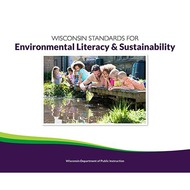(View Complete Item Description)
This multi-part activity introduces users to normal seasonal sea surface temperature (SST) variation as well as extreme variation, as in the case of El Niño and La Niña events, in the equatorial Pacific Ocean. Via a THREDDS server, users learn how to download seasonal SST data for the years 1982 to 1998. Using a geographic information system (GIS), they visualize and analyze that data, looking for the tell-tale SST signature of El Niño and La Niña events that occurred during that time period. At the end, students analyze a season of their own choosing to determine if an El Niño or La Niña SST pattern emerged in that year's data.
Material Type:
Activity/Lab
Authors:
Betsy Youngman,
David Smith,
Earth Exploration Toolbook Chapter from TERC




















